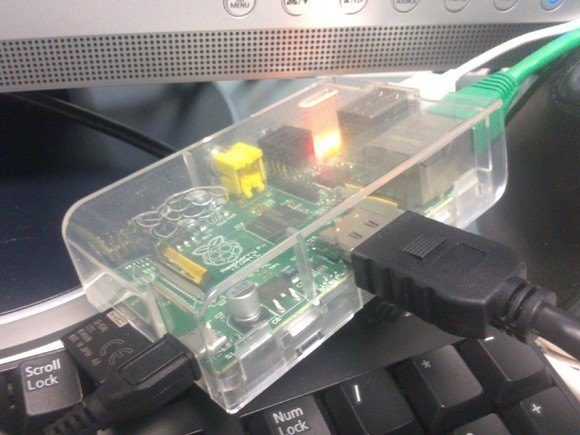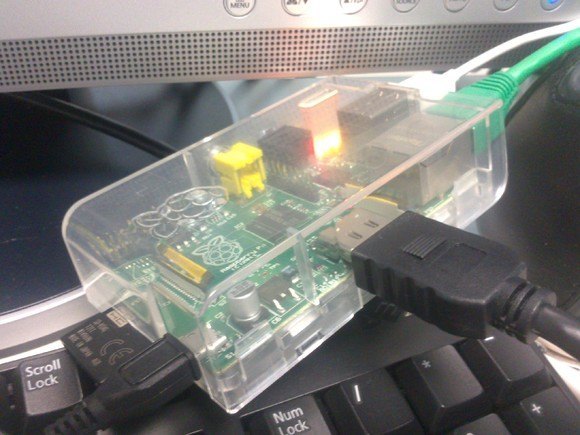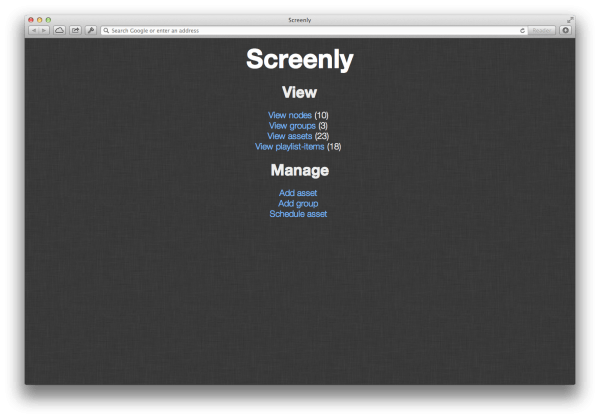
More Digital Signage Served With Raspberry Pi
January 24, 2013 by Dave Haynes
Mr. Google Alerts popped up an item on the open source community GitHub about something called the SAPO Digital Signage Client, which started as a one-off project but has got more energy behind it now as a signage solution using the ultra-low cost Raspberry Pi devices.
This code, says the post, was developed internally at SAPO (Portuguese company) for running the Codebits 2012 (tech event) signage atop Raspberry Pi devices, and quickly evolved from a guerrilla solution into a full-blown client-server app.
This is going to be version 2.0 – version 1.0 is being used internally at SAPO since October 2012 and will be replaced by this (and a few custom add-ons) once it’s finished.
 Here’s a brief summary of the requirements and their impact on solution design:
Here’s a brief summary of the requirements and their impact on solution design:
- clients are not supposed to store any content locally, except a handful of templates to render baseline content. The idea here is that you’ll be running this against a set of web services or a full web server that will render pages to the devices.
- clients therefore run “playlists”, i.e. JSON files listing URLs to render locally. Playlists can contain URLs to HTML content of various descriptions or to video files, and support time intervals and simple “random” groups.
- the server can push new content to the client in near-realtime (depending on content type), including whole new playlists.
- communication between client and server was downgraded from websockets to an HTTP(S) polling mechanism to better cope with firewalls, NAT, timeouts, etc.
- accordingly, the client runs its own HTTP server to allow for disconnected operation (if the central server goes down, we’ll always be able to display something, and cache some information in the meantime)
Translated out of the PropellerHead language, what these guys are doing is using the little Pi boxes to pull web content down and render content on the devices,with very little other than the base templates and scripting held locally on the units. They say the system handles 720P video (really all you need in many/most cases) just fine.
Meanwhile, another open source project called Screenly (written about n the past) is also getting more serious.
And I quote from the project’s new website …
Image appropriated from: http://viktorpetersson.com/2012/10/16/screenly-pro-is-now-in-beta/
Screenly is a powerful digital signage solution for the Raspberry Pi.
If that sentence was just gibberish to you, here’s what that means in plain English:
With Screenly and ~$35 worth of hardware (the price of a Raspberry Pi), you can turn any modern TV or monitor into a digital sign. Screenly can be used for anything from displaying advertisement, to videos and images. Screenly even allows you to manage all of this remotely using a web-browser.
Screenly comes in two editions: Screenly OSE (Open Source Edition) and Screenly Pro.
Screenly OSE is Open Source (i.e. free to use and modify) and is designed to run on a single node (or screen). Screenly Pro on the other hand is commercially backed by WireLoad and caters to larger installations where you want to manage multiple screens within one interface.
Wireload is an app developer (not for mobile) that has a few products for the Mac OS.
No price, as yet.
Now I don’t think for a millisecond that big retail or corporate will flock to low or no cost solutions running on teeny processors designed primarily for classrooms and geek hobbyists. However, there are all kinds of academic institutions and small businesses with somebody technical on staff who will take a real look at this stuff.
The capabilities are likely always going to be a fraction of what commercial products can deliver, but there are an awful lot of users out there who just want to run three messages on a screen, over and over and over and over.
If I was running a software company where the pitch was focused heavily on price, I’d be inclined to keep an eye on what’s developing here and making sure prospective end-users understand the importance of scalability and customer support — things these open source-based projects will struggle to provide.





Leave a comment